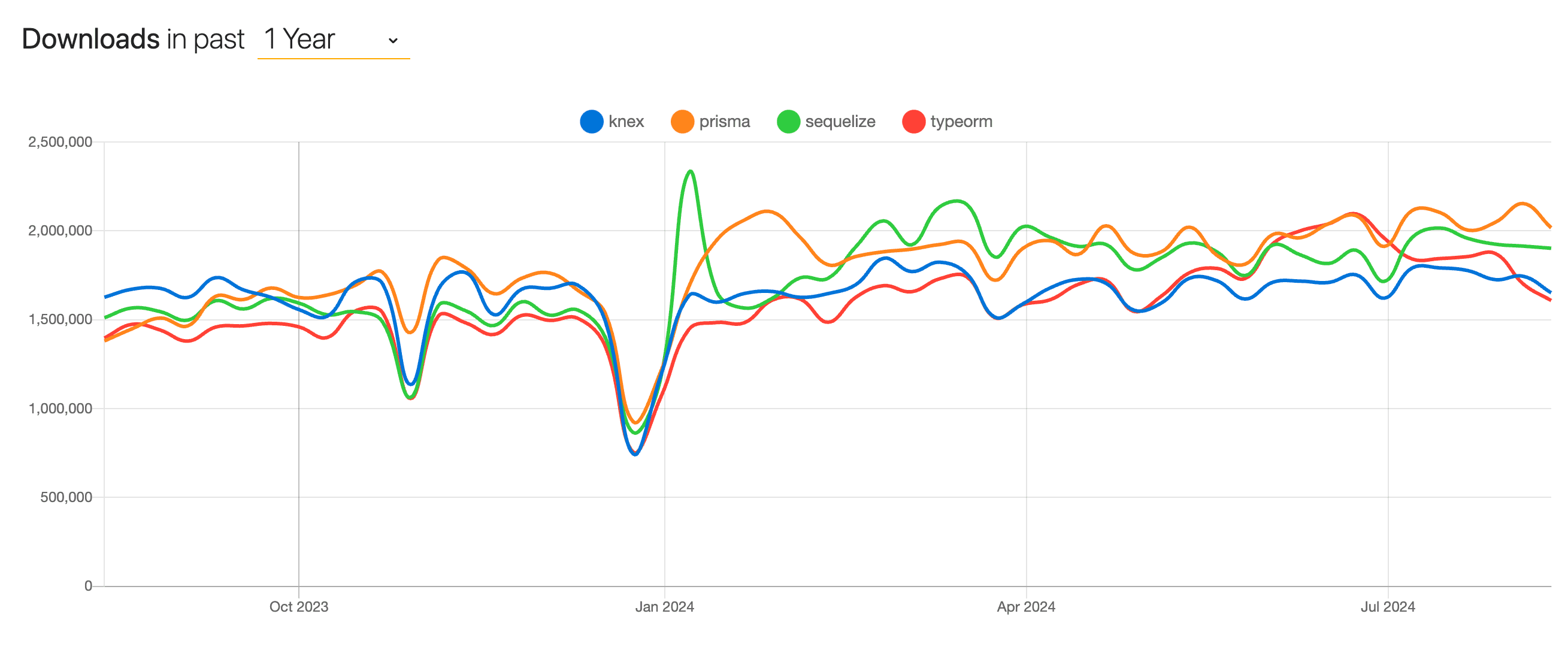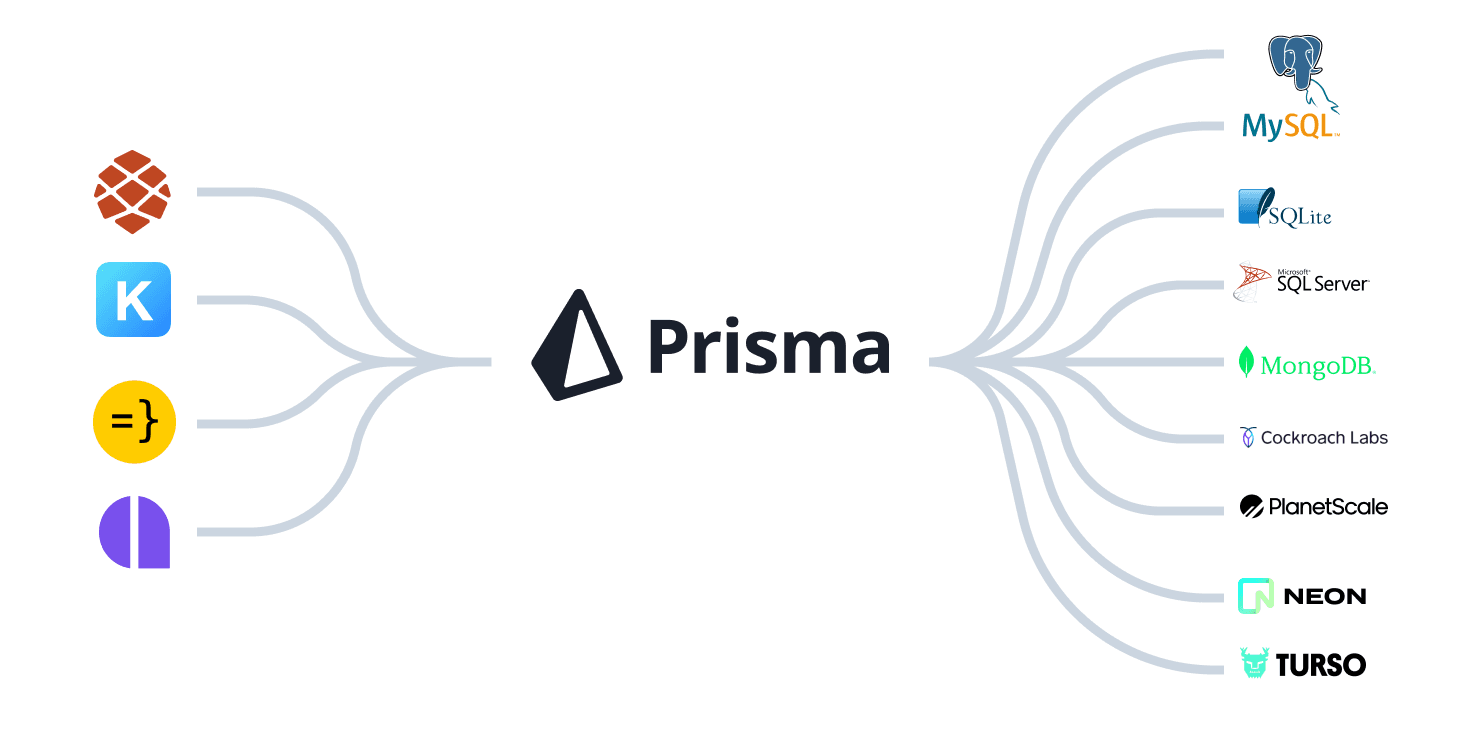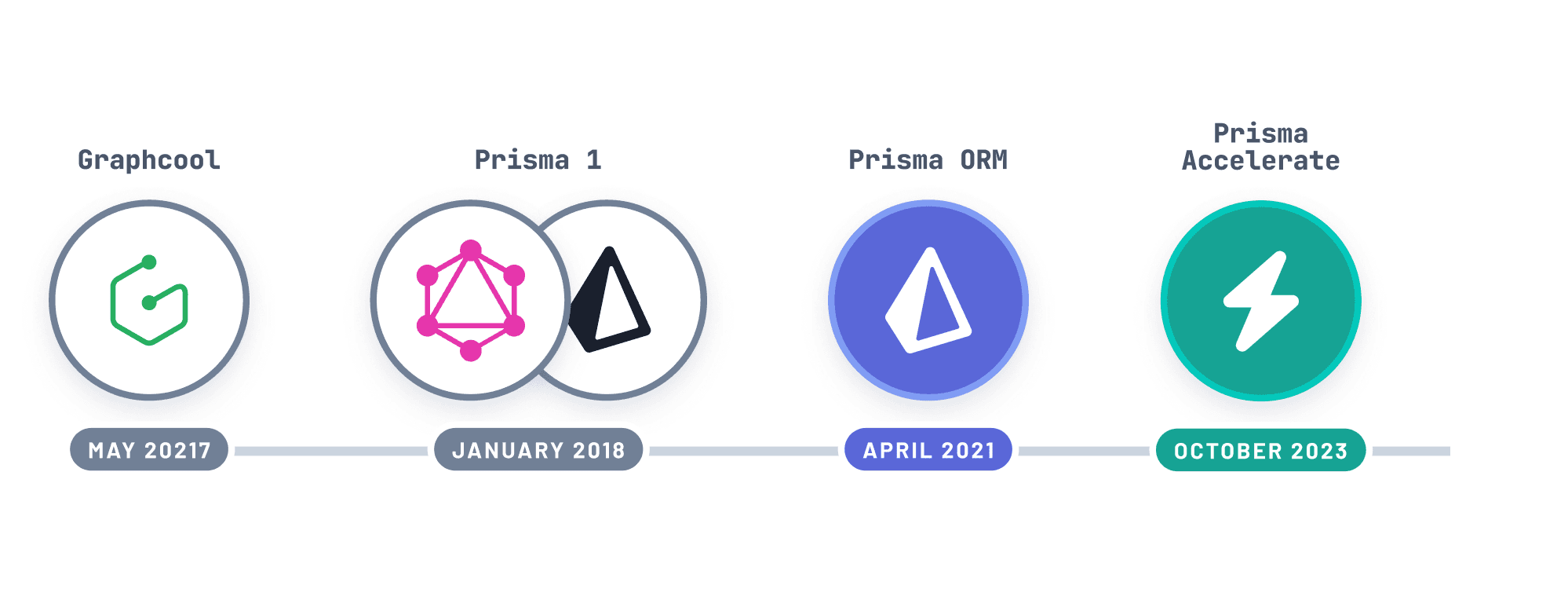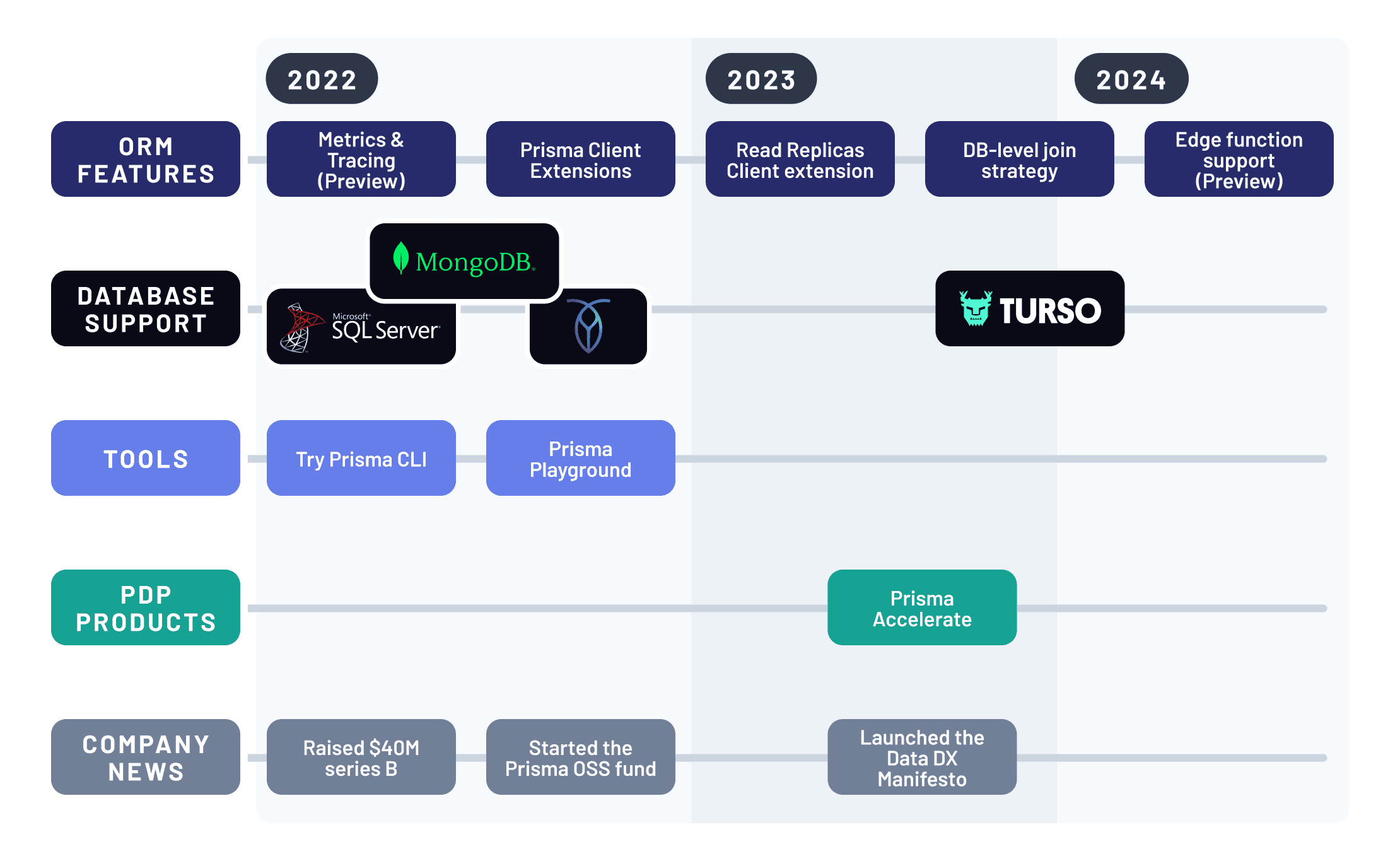Prisma ORM was released for production in 2021 and recently became the most downloaded database library on npm! We are grateful to share this milestone with our community and want to take the opportunity to reflect on the past and give an outlook into the future.

Thank you to our amazing community ❤️
Becoming the most downloaded ORM in Node.js
When we launched Prisma ORM in 2021, the developer tooling and infrastructure looked very different. TypeScript was young, Serverless was still a buzzword and Edge was just about to be conceived.
Since then, Prisma ORM has gained steady popularity and recently made it to first place in the npm download charts 🎉
We’re proud that Prisma ORM has pushed the TypeScript ecosystem forward and introduced the first fully type-safe layer for database interactions in Node.js and other server-side JS runtimes.

Community is the core of Prisma
Community has always been at the core of our success at Prisma! Since our early days in 2016, we have hosted dozens of developer Meetups (TypeScript, Rust, GraphQL, and more) and ran several in-person and online conferences!
We see developers create content about Prisma ORM, build tools for the Prisma ecosystem, or help each other out with questions on GitHub, Stack Overflow, and Discord.

In short: We wouldn’t be here without the amazing support from our community — thank you!
Connect with more than 5k other developers on the Prisma Discord.
A growing open-source ecosystem
A huge part of Prisma ORM’s adoption and why it makes developers so successful is thanks to the growing ecosystem around it.
Prisma ORM as the default in next-generation web frameworks
There are numerous next-generation web development tools and frameworks that have chosen Prisma ORM as their database library of choice, for example:
- RedwoodJS: Fullstack web framework based on React, GraphQL, TypeScript, Jest, and Storybook. Built by GitHub’s co-founder Tom Preston-Werner, it’s heavily inspired by Ruby-on-Rails and comes with a powerful CLI that supports your development workflows.
- KeystoneJS: “CMS for developers” that provides elegant APIs. Keystone lets you describe your schema in a flexible JavaScript format and, from there, provides you with a database, API, and more!
- Wasp (YC W21): High-level DSL to build web apps using React. Check out their free, production-ready SaaS starter if you’re curious.
- Amplication: Backend development tool that auto-generates production-ready applications. With 6.6M in seed funding, Amplication is one of the most promising backend generation tools on the market.

Community tools for even better Prisma ORM workflows
In addition to Prisma ORM being the default database library in these frameworks and tools, the Prisma community has built a vast amount of diverse tooling that makes development with Prisma ORM even more delightful.
Starting with Prisma Client in other languages (like Python or Go), to Prisma-based DSLs such as Zenstack, to generators (e.g. for visualizing DB schemas or generating Zod types), and numerous other tools like middlewares, Client extensions, CLIs, and more! We feel grateful for such an active and thriving community building tools for the Prisma ecosystem.
Real-world open-source projects built on Prisma ORM
Finally, we’re excited to see the usage of Prisma ORM in real-world open-source projects. From indie hacking projects to funded startups, these example projects are a great reference if you want to see what production-grade applications look like when built on top of Prisma ORM!
If you’re interested, check out the interviews with the founders of open-source companies we’ve published on YouTube.
How we got here: The evolution of Prisma
As a company, we went through a lot of different phases until we arrived where we are today!
Having started as GraphQL-based Backend-as-a-Service (BaaS), we’ve “climbed down the ladder of abstractions” from the API layer to the database. While Prisma 1 still was primarily focused on building GraphQL APIs, Prisma 2 and later versions (aka “Prisma ORM”) have been solely about improving database workflows.

Since the initial, early access release of Prisma ORM in July 2019, a lot has happened. Here’s a recap of our favorite things that we accomplished in the last years:

- ORM features
- Metrics & Tracing Preview (Aug 2022)
- Prisma Client extensions (Jun 22, 2023)
- Read Replicas Client extension (Sep 13, 2023)
- DB-level JOIN strategy (Feb 21, 2024)
- Support for edge functions (Mar 12, 2024)
- Support for new databases
- SQL Server (Sep 07, 2021)
- MongoDB (Apr 05, 2022)
- CockroachDB (May 25, 2022)
- Turso EA (Sep 28, 2023)
- Products
- Prisma Accelerate (Oct 26, 2023)
- Launched tools
- Try Prisma CLI (Nov 25, 2022)
- Prisma Playground (Dec 21, 2022)
- Company news
- Raised $40M series B (May 03, 2022)
- Started the Prisma FOSS Fund (Jul 20, 2022)
- Launched the Data DX Manifesto (Oct 05, 2023)
We’re just getting started …
We’re excited about how far we’ve come with Prisma in the last few years — but at the same time, it feels like we are just getting started!
We have a lot of early ideas as well as concrete and already progressed plans for exciting products (some of them not very far out anymore 👀) that will further improve the developer experience for building data-driven applications.
To stay up-to-date about everything that’s happening in the Prismaverse, keep an eye on our changelog and follow us on X! And if you have ideas for how Prisma can be improved, always feel free to open an issue on GitHub or reach out to us on Discord.
Don’t miss the next post!
Sign up for the Prisma Newsletter